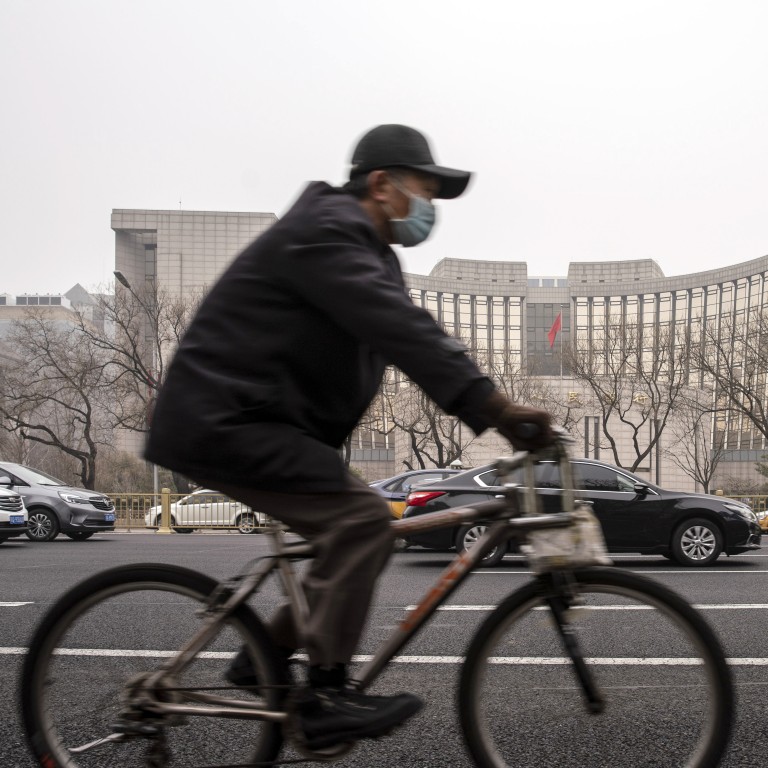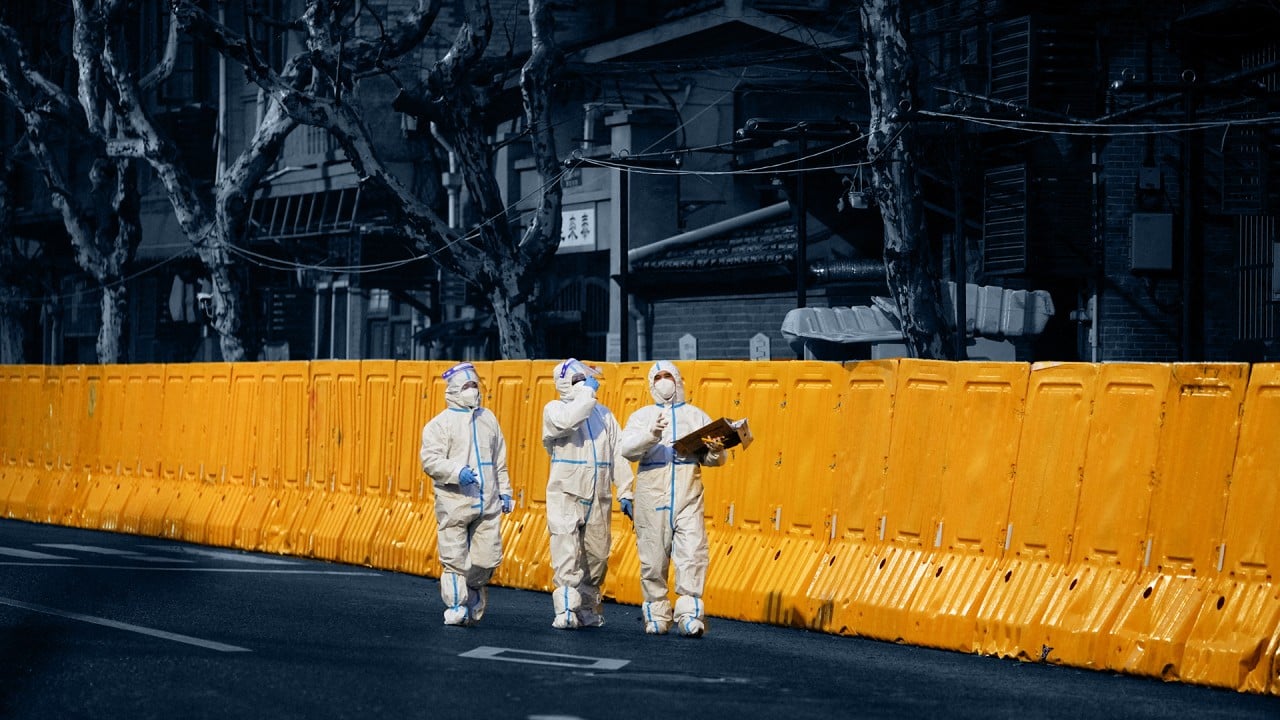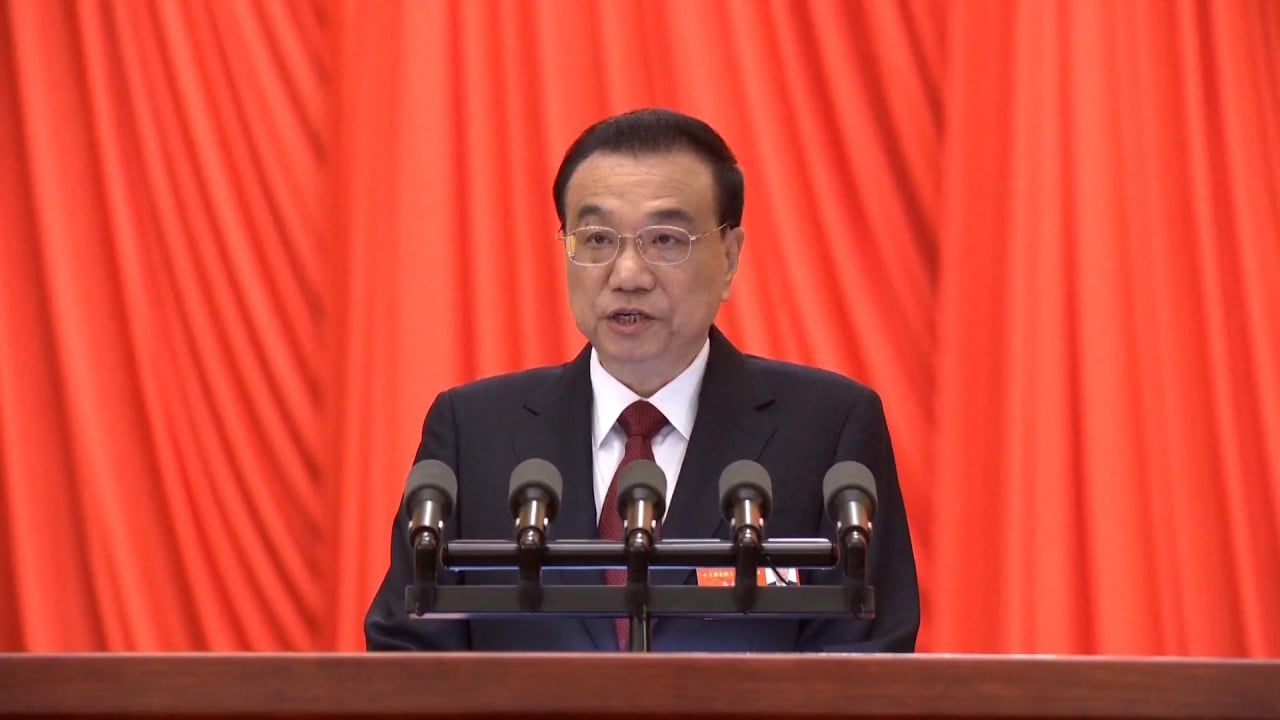
China cuts reserve requirement ratio to boost economy, releasing US$83.2 billion into banking system
- People’s Bank of China decision comes only two days after Premier Li Keqiang said there will be a ‘timely’ reduction in the reserve requirement ratio (RRR)
- He also said other policy tools could be used to support the economy which is faltering amid the country’s worst coronavirus outbreaks in two years
China’s central bank on Friday announced a much-anticipated cut of its reserve requirement ratio (RRR), or the amount of cash that banks must hold in reserve, to shore up its slowing economy amid growing headwinds.
Though the 0.25 percentage point reduction was below market expectations, the People’s Bank of China (PBOC) said following the decision that the current level of liquidity is sufficient and the move is aimed at helping sectors hit by the coronavirus pandemic.
The world’s second largest economy faces mounting challenges as an Omicron outbreak plagues more than 70 cities nationwide and lockdowns in commercial and financial hubs disrupt economic activities.
Covid-19 outbreaks dampen China’s infrastructure spending push
Friday’s decision marks the third reserve cut in the current easing cycle, following 0.5 percentage points cuts in July and December last year.
Small commercial banks and selected rural lenders will benefit from a further reduction of 0.25 percentage points, the PBOC said, as authorities try to help under-pressure small and micro businesses.
The move will release 530 billion yuan (US$83.2 billion) worth of long-term liquidity into the interbank system on April 25, with an aim of supporting the economy in the face of growing headwinds.
The central bank said the current level of liquidity is ample and the reserve cut is aimed at beefing up support for the real economy, especially industries and small and medium-sized enterprises.
“The PBOC will continue to implement prudent monetary policy. We will closely monitor price changes and ensure overall prices are stable,” it said in a statement, adding it would be paying close attention to monetary policy shifts in major advanced economies to strike a balance between domestic and external needs.
“Meanwhile we will keep sufficient liquidity and push to lower funding costs to stabilize the macro economy.”
The 0.25 percentage point cut was below market expectations and comments by the PBOC imply there is limited room for further reductions in the RRR or interest rates, according to Zhang Zhiwei, chief economist with Pinpoint Asset Management.
More liquidity may help on the margin, but it doesn’t address the root of the problem
“I don’t think this RRR cut matters that much for the economy at this stage,” he said. “The main challenge the economy faces is the Omicron outbreaks and the lockdown policies that restrict mobility.
“More liquidity may help on the margin, but it doesn’t address the root of the problem. Manufacturers face daunting risks of supply chain disruptions. Unless we see effective policies to address the mobility problem, the economy will slow.
“I expect GDP growth in the second quarter to turn negative. The outlook for the second half also becomes unclear.”
‘Timely’ support set to bolster China’s faltering Covid-hit economy
“In light of changes in the current situation, we will encourage large banks with higher provisions to lower provision ratios in an orderly manner and will use monetary policy tools, including RRR cuts, in a timely way,” the State Council said in a statement after a regular meeting chaired by Premier Li Keqiang.
Earlier on Friday, the PBOC had held off making a cut to the medium-term funding (MLF) rate for financial institutions, keeping the key policy rate for loans to financial institutions at 2.85 per cent.
The reserve cut alone will do little to boost growth, said Julian Evans-Pritchard, senior China economist at Capital Economics.
There is a chance that the stimulus largess of 2008 and 2020 could be repeated if growth concerns continue to build
“This will help nudge down bank lending rates. But in order to make much difference to credit growth it needs to be followed up by cuts to policy rates and a relaxation of loan quotas,” he said.
The RRR often serves a narrower purpose as a means to influence bank behaviour and manage liquidity, with little lasting impact on monetary conditions.
Evans-Pritchard said the PBOC has shown “surprisingly little appetite” for rate cuts recently.
“There is a chance that the stimulus largess of 2008 and 2020 could be repeated if growth concerns continue to build. But for now, most signs suggest that the PBOC is taking a restrained approach akin to 2018-19,” Evans-Pritchard said.
Ding Shuang, chief Greater China economist at Standard Chartered Bank, said the cut was restrained because the RRR for many financial institutions has already approached the floor of 5 per cent.
“The RRR cut should not be used as a regular liquidity management tool, but a policy signal. It should only be used when very much necessary,” he said.
Ding, however, said the cut had long been anticipated after being mentioned at three State Council-level meetings and could be absorbed by the market.
“The effects may not be as much as expected,” he said, adding that the monthly loan prime rate, due out next week, could also drop accordingly.
Additional reporting by He Huifeng and Orange Wang


.JPG?itok=J8tgfPmW&v=1659948715)

